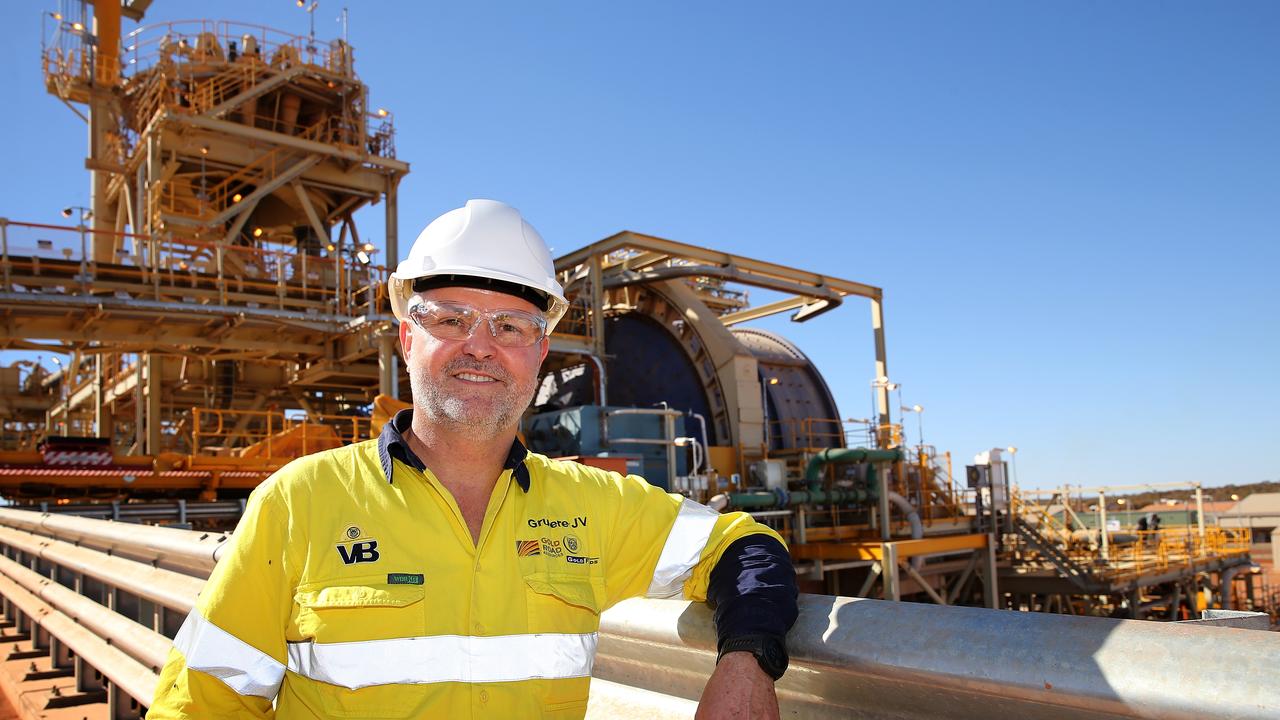BlueScope steelworks in rural Ohio on frontline of US industrial revival
As the world melts down over Donald Trump’s tariffs, an Australian company recycling steel is coming up trumps in the US Rust Belt.
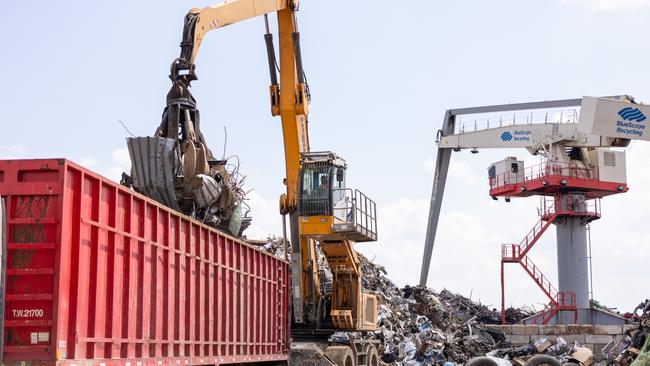
Business
Don't miss out on the headlines from Business. Followed categories will be added to My News.
The great American industrial revival. That’s how Conrad Winkler, the boss of a US steelworks owned by an Australian company, sees what is unfolding in the Rust Belt.
As the rest of the world goes into meltdown over Donald Trump’s tariffs, there is another kind of meltdown happening at the North Star steelworks run by Mr Winkler. Australian company BlueScope is melting down the equivalent of 9000 cars a day and churning out high-quality steel for customers, most of them in the automotive, agriculture, general manufacturing, construction and renewables sectors. And 70 per cent of those customers are within a 250km radius, 90 per cent are within 500km.
BlueScope’s North Star steelworks near the town of Delta in rural Ohio has been one of the early winners from Trump policy settings, and is an example of why tariffs matter in America.
To get there from Detroit – dubbed Motor City in the heyday of the US car industry – you take Interstate 75 out of Michigan, go past Toledo and wind your way through corn fields dotted with red-roofed barns.
North Star is part of a US steel industry that has had massive investment since Trump applied tariffs on imports during his first stint in the White House.
Melbourne-headquartered BlueScope alone has pumped $US735m ($620m) into expanding North Star and ticked off on spending another $US130m for more growth.
And to feed the growing electric arc furnace operations, BlueScope acquired MetalX’s ferrous scrap steel recycling business for $US240m in late 2021.
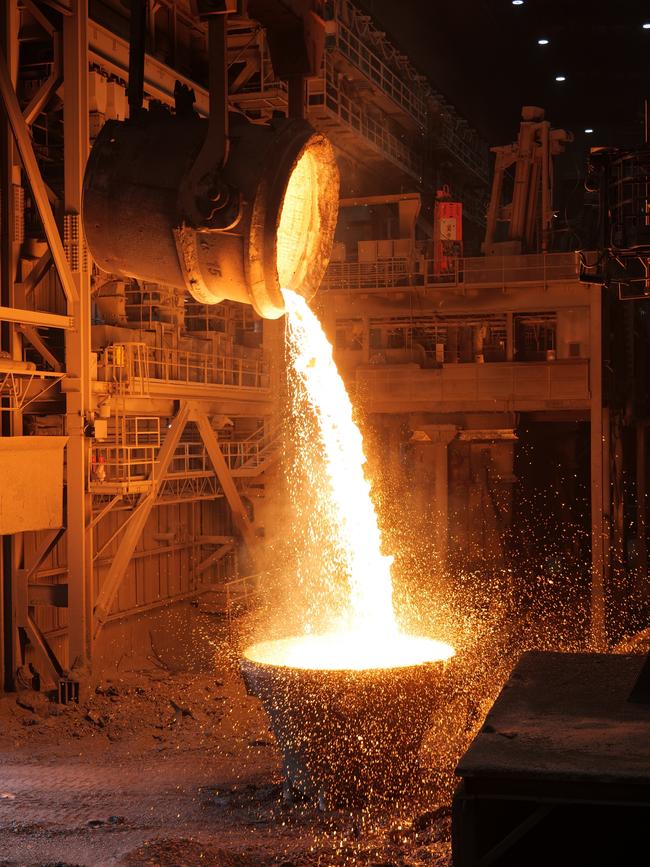
The steelworks are a reminder of what is possible in the US. North Star can make 3.25 million tonnes of steel a year with virtually no carbon footprint and uses minimal water thanks to a reverse osmosis system. Pay rates are based on performance, and it operates across the road from 40 hectares of greenhouses used to grow tomatoes and strawberries.
“BlueScope is absolutely part of, I think, a great American industrial revival,” says Mr Winkler.
“If you look at what’s happened in the US since those tariffs were first put in place (in 2018), there’s been about $US20bn in steel investments, of which we’ve been right at the centre. The investment in modern, new facilities is actively happening here, which puts us in great cost-competitive position. And don’t forget, the US overall carbon footprint, especially ours, is really low.”
Australia, Brazil, Argentina and South Korea, and later Canada and Mexico, all received exemptions from the 25 per cent tariffs in 2018 and 2019, but not this time around.
That’s not great for BlueScope’s Port Kembla steelworks – it exports 200,000 to 300,000 tonnes a year to the US – but chief executive Mark Vassella expects that “net-net” the tariffs will be a positive for the firm as US steel prices rise.
BlueScope has been investing in the US for 30 years and recently spent $2bn on acquisitions and brownfields expansion of its operations, including at North Star.
The journey started when BlueScope was part of BHP (it was spun out in 2002) and opted to build North Star in partnership with Cargill. BlueScope is now the fifth-largest steel producer in the US, with about 4000 workers with operations in many states and headquarters in Kansas City.
Prices for the hot-rolled coiled steel produced at North Star were hovering around $US670 a tonne in December. They ended last week at about $US930 a tonne.
A big kick up to around $US955 a tonne came as soon as the Trump administration announced the section 232 tariff regime and indicated it wasn’t of a mind to issue exemptions.
Mr Winkler said the price rises are significant and directly impact North Star.
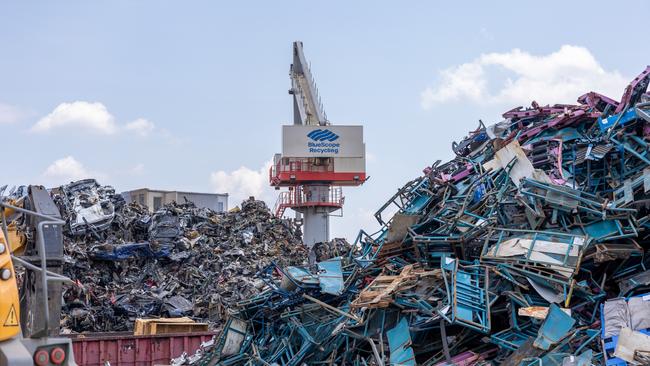
“From our perspective, what we really want is for the full manufacturing base in the US to benefit. Obviously, if it’s just steel prices going up, and a lot of our customers just have to pay a higher price, that’s something that has to be dealt with,” he said.
“The next challenge is, how do you do that? I think that our preference would be that prices are high enough to be profitable and enable reinvestment in the industry, but not to fluctuate so much that it scares away the customer.”
Counting the costs
Mr Winkler started out as mechanic engineer from MIT who put himself through university by serving time with the US Navy on nuclear-powered submarines.
He has mixed feelings about Australia and some other US allies not being made exempt from the Trump tariffs.
“There’s a couple of countries in the world that have stood together through wars, through peace. I have my own views of how that plays out with national security, and as a former member of the of the US armed forces those things are really important to me,” he said. “On the other hand, from a steel standpoint … what happened in terms of huge number of (tariff) exemptions, that’s another question.”
After the navy and some post-graduate studies, Mr Winkler became a management consultant who advised companies on whether they were better investing onshore or in China or Southeast Asia.
“It was always a tricky analysis when you had all these basically legacy assets that were built in World War II or the 1950s, and you compare those to building a brand new asset in China or Thailand,” he said.
“If you look at building new manufacturing now, what really counts is do you have the skills and capability for the automation? And do you have the support structure around you?
“Back in the 1970s and 80s when a lot of the outsourcing was occurring, the labour cost differential was massive. Now, when you look at all the automation, the actual amount of hourly labour as a percentage of the cost of a product has dropped right down, so that opportunity is there.
“I think we’re starting on a growth trajectory as some of that production comes back to the US. There’s a lot of different forms that that takes, and a lot of industries that are growing. Some of it is tariff-related, and some of it is just the refocus on long supply chains and does it really make sense to have so much of your product come from China?”
A big change in US steelmaking has been the trend to electric arc furnaces and away from blast furnaces such as those in China that rely on Australian iron ore and coal to churn out about a billion tonnes of steel a year.
Going green
EAFs use scrap steel as a feedstock and the percentage of total production in the US is trending towards 70 per cent.
While iron ore giants BHP, Rio Tinto and Andrew Forrest-led Fortescue talk about making green iron and steel in big volumes sometime in the future, the US is already doing, it albeit not at China-scale.
The North Star steelworks is fed by three scrap metal yards – one almost across the road, one in Waterloo, Indiana, and another in Mansfield, Ohio.
When BlueScope Recycling and Materials boss Clyde Billips looks at a carpark, he does a quick calculation of how quickly he could “shred” every vehicle in it for steelmaking feedstock. In the case of the North Star carpark dominated by pick-up trucks owned by the many workers who come from local farming families, he reckons about one hour.
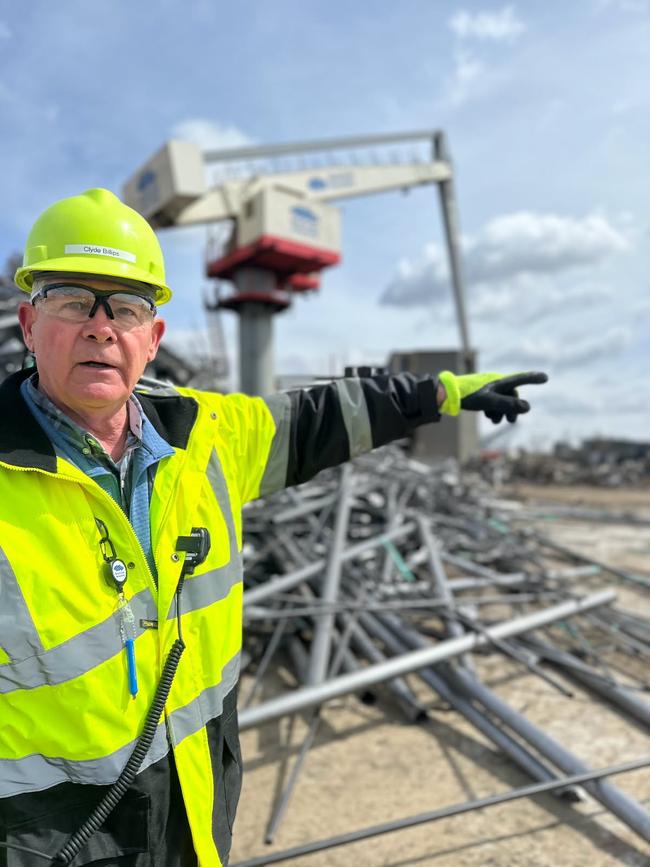
Billips started in the recycling game 40 years ago out of a desire to protect America’s natural resources and has watched the industry become highly sophisticated. These days he can pick scrap to pieces so that little is wasted and deliver to near the exact specifications of the steelworks. The advances in recycling have enabled EAF operations to produce high-grade steel products.
“We have so much fun. We get to play with some of the biggest and best toys available,” he said of shredding cars and other scrap metal. “We always kind of joke about it that we’re really just turning big scrap into little scrap.
“But I will tell you, there is an art to it to really get the types of scrap available for the steel mill so they can continue to make high-quality, world-class steel.
“When you start looking at electric arc furnaces, like the one across the street, that is the future. That is what is really happening here in the US. There are fewer blast furnaces, most of them are in transition.”
Although North Star talks about melting down the equivalent of 9000 cars a day, most of the feedstock is sheet iron from old sheds and other buildings. Roughly a third is from automotive.
Billips say the three recycling plants are strategically located in the Rust Belt.
“You have got Detroit, you’ve got Toledo, you’ve got Cleveland,” he said. “They’re all concentrated in this area. There’s very large cities with lots of people that consume, and we want everything they consume and get rid of, and that includes everything from appliances to old sheds to their automobiles.
“We’re capable of processing all of that material and then reusing it and taking it right back across the street to be remelted.”
There was no recycling plant across the road when BHP and Cargill opted to build North Star in 1995. The project was subject to a referendum that required 90 per cent of the local farming community to give their blessing.
North Star’s inaugural president, Ed Fox, is credited with building an enduring community relationship. Fox would have breakfast most mornings at the Barn Restaurant where he fielded questions from the farmers who still gather there to talk tractors and commodity prices.
A lot of them were fed up with their children who couldn’t find work leaving the area.
“You had these people who knew how to fix tractors, they knew how to get up really early in the morning and work really hard all day,” said Mr Winkler. “A lot of our team members now still have family farms. They’re not the primary person running the family farm anymore, but their families are still part of that.”
Industrial heartland
North Star and other EAF steel producers in the US operate under a variable compensation system where pay rates are based on factors such as safety, quality and on-time delivery.
“The way that works is that when times are good, people get paid really well. When times are really lousy, people get paid less,” said Mr Winkler. “But we tend to not have to lay people off, which we’ve never done in our history.”
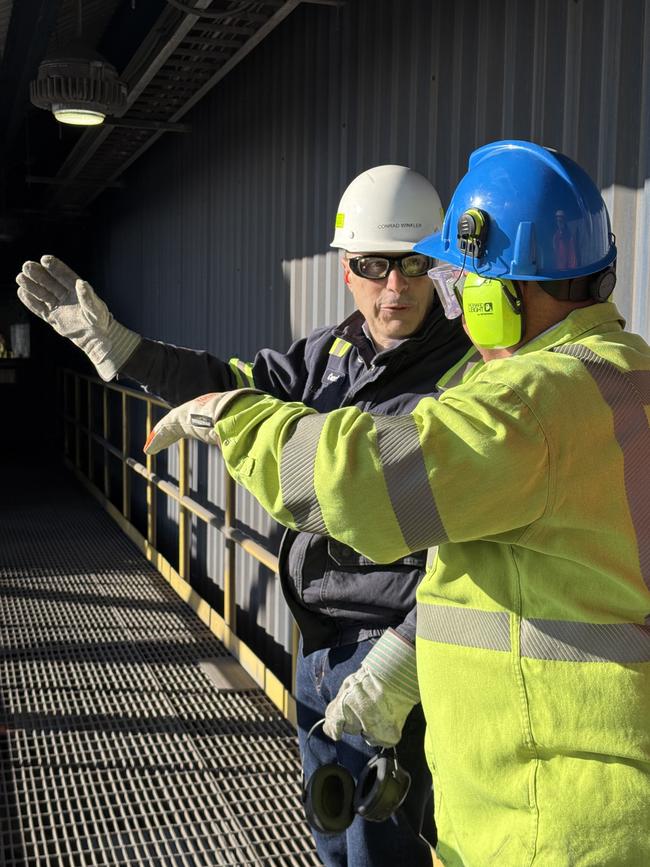
Inside the steelworks, workers refer with pride to the original arc furnace as their hot rod – they have tweaked it for every inch of performance. They’re bringing the newer arc furnace up to the same speed.
North Point is the largest single site user of electricity in Ohio using 300 megawatts of power in a state that is home to plenty of heavy industry.
The steelworks is almost carbon emissions-free based on paying for nuclear power certificates for supply through the Ohio grid.
Globally, traditional steelworks produce about 1.88 tonnes of carbon per tonne of steel. North Star’s carbon footprint even without allowing for emissions-free nuclear power is 75 per cent lower at 0.46 tonnes of carbon per tonne of steel. The North Point footprint falls to 0.18 tonnes taking into account the nuclear credit, according to the company’s environmental product declaration.
Mr Winkler said BlueScope and North Star’s former owners had the foresight to build the steelworks close to customers, close to major sources of scrap and close to where other steelworks were reaching the end of their life.
Up to 45 per cent of the steel produced by North Star is sold to the US automotive industry and 10-15 per cent into agriculture. Other big chunks are general manufacturing and construction, and it has displaced imported steel with some customers.
“Even though there’s been a lot of automotive moving to the south, there’s a lot of automotive right here,” said Mr Winkler.
“Toledo has the Jeep factories and then just up the road between us and Detroit, there’s several automotive assembly plants, stamping plants, the plants that make the parts that go into that go into cars.
“We have structural tube production here that goes into construction. We’ve got galvanising lines across the street, which feed a lot of different industries.
“We’re in what’s referred to as the Rust Belt, but you know it’s also the industrial heartland of the country.”
More Coverage
Originally published as BlueScope steelworks in rural Ohio on frontline of US industrial revival




